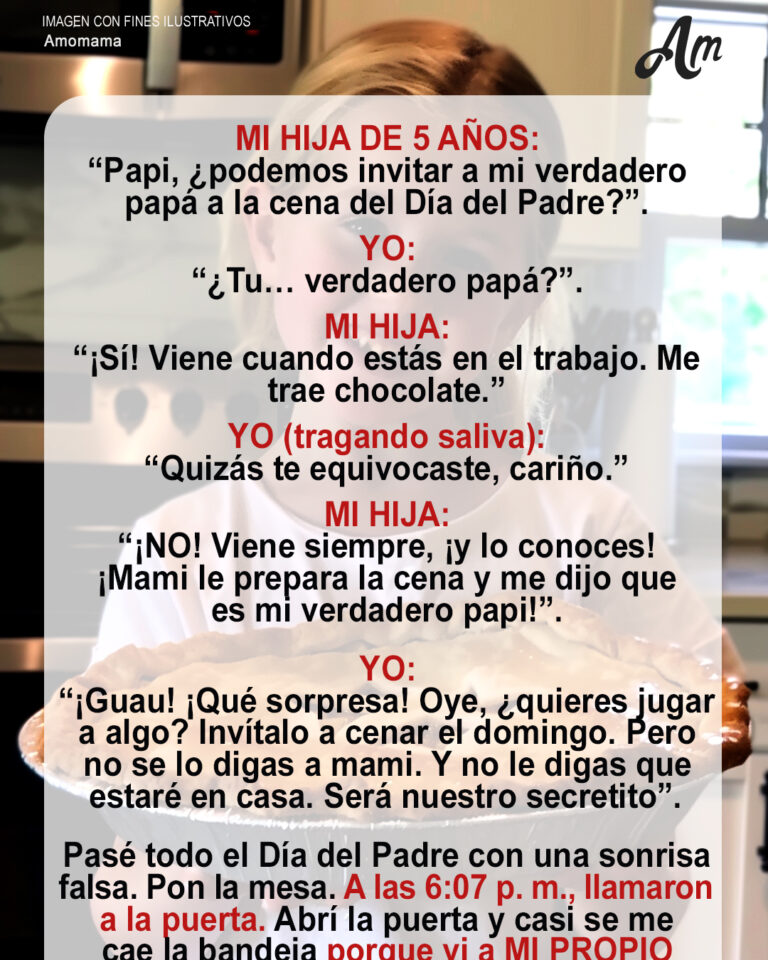I Married a Single Mom with Two Daughters, One Week Later, They Took Me to Meet Their Dad in the Basement

When I married Rachel, I knew I was taking on more than just a partner—I was joining her family. Her two daughters, Sophie (seven) and Mia (five), greeted me with eager smiles on that first morning, bounding into the kitchen in matching pajamas and announcing our new life together. Their mother’s warmth filled every corner of the house: the living room with its overstuffed couch, the scent of cinnamon candles drifting from the dining area, and the polished hardwood floors that echoed the girls’ laughter. It was perfect—except for the basement door at the end of the hallway.
From day one, I sensed something odd about that unassuming, cream‑painted door. It stood silent and still, as if holding its breath. Sometimes when Sophie passed, she stole a glance over her shoulder; Mia’s giggles always tapered off the moment she neared it. Rachel never mentioned it, and I didn’t ask—until the small comments and uneasy moments began to pile up.
One evening, as I set our mismatched plates on the table, Sophie drifted in beside me. “Do you ever wonder what’s in the basement?” she asked, tilting her head with a seriousness that made me pause. I laughed lightly, masking my curiosity. “Maybe old boxes or holiday decorations,” I replied, but she didn’t smile. She simply nodded and slipped away.
During dinner, Mia dropped her spoon and leaned in close, her voice barely above a whisper. “Daddy doesn’t like loud noises,” she said. My stomach twisted. “What do you mean?” I asked, but she had already scampered back to her seat, humming to herself as though nothing had happened.
Rachel’s lips tightened briefly at the corners, but she stayed silent. All I knew of their father—my future step‑dad—was that he was “gone.” Rachel’s evasions left me unsure: did he walk out, did something tragic occur, or was there more she couldn’t bear to share? I tucked the questions away, not wanting to overwhelm her.
A few days passed before I found my answer—courtesy of a simple drawing. Mia sat at the kitchen counter with crayons scattered around her. Over my shoulder, I peered at her paper: four stick figures under a yellow sun. She pointed them out with pride: “That’s me, Sophie, and Mommy.” Then she tapped the fourth figure, drawn inside a box shaded in gray. “And that’s Daddy. He lives in the basement.”
My heart stuttered. That night, curled on the sofa, I gently broached the subject. “Rachel, what do the girls really think about their dad?” She closed her eyes, took a slow breath, and told me everything. Two years ago, he’d been diagnosed with aggressive cancer. He fought hard, but the disease overtook him in weeks. Terrified of confusing a five‑ and seven‑year‑old, Rachel had told them simply that he was “gone.” But she’d never explained death. She’d never moved his urn from the basement.
A week later, the girls were home sick. While I ladled chicken soup, Sophie appeared at the doorway. “Wanna come say hi to Daddy?” she asked. I froze. “I—” began to stammer, but Mia’s little voice piped up: “He’s down in the basement. We visit him.” Sophie took my hand and led me down the hall. My footsteps echoed on the creaking stairs as we descended into the dimly lit chamber. The single bulb flickered, revealing a small corner dedicated to one soul: a wooden table covered in the girls’ drawings, plush toys, and vases of wilted flowers. There, at the center, sat a simple urn. Sophie gave a solemn nod. “That’s Daddy,” she said. Mia reached out, her tiny fingers brushing the urn as though it were a treasured companion.
I knelt beside them, swallowed the lump in my throat, and whispered, “He would love the space you’ve made for him.” They smiled, as though I’d spoken words they’d longed to hear.
That night, I told Rachel every detail. Tears welled in her eyes as she admitted she’d thought the girls had forgotten. She hadn’t wanted the urn in the living room—feared reminders would haunt them every day. Yet she hadn’t known how to release him, either. “Maybe… maybe now’s the time,” I offered gently.
The next morning, we rose early and transformed our living room. Together, we cleared a shelf on the mantel and placed the urn beside family photos—Rachel and their father on their wedding day, Sophie and Mia hugging him at the park. The girls arranged fresh blooms and taped new drawings around the mantelpiece until the space overflowed with color and love.
That evening, we gathered the girls on the couch. Rachel’s voice trembled as she spoke: “Your daddy isn’t just in the basement. He’s here, too—in our stories and memories. He’s in the way we love each other.” Mia’s eyes lit up. “Can we still say goodnight every night?” she asked. Rachel nodded, tears glimmering. “Every single night.”
From that moment on, Sunday became “Daddy Time.” We lit a candle by the urn, showed off our weekly drawings, and told stories of his terrible dance moves, his famous chocolate chip pancakes, and his booming laughter that shook the walls. I never tried to replace him. Instead, I learned to stand alongside his memory—holding space for a man I never met, yet whose love shaped these two bright girls.
In our home, love doesn’t vanish when someone leaves. It transforms—rooting itself in ritual, in shared tales, and in the tender act of remembrance. And in those moments gathered around the mantel, the basement’s quiet weight finally lifted, replaced by the soft, enduring warmth of family.




